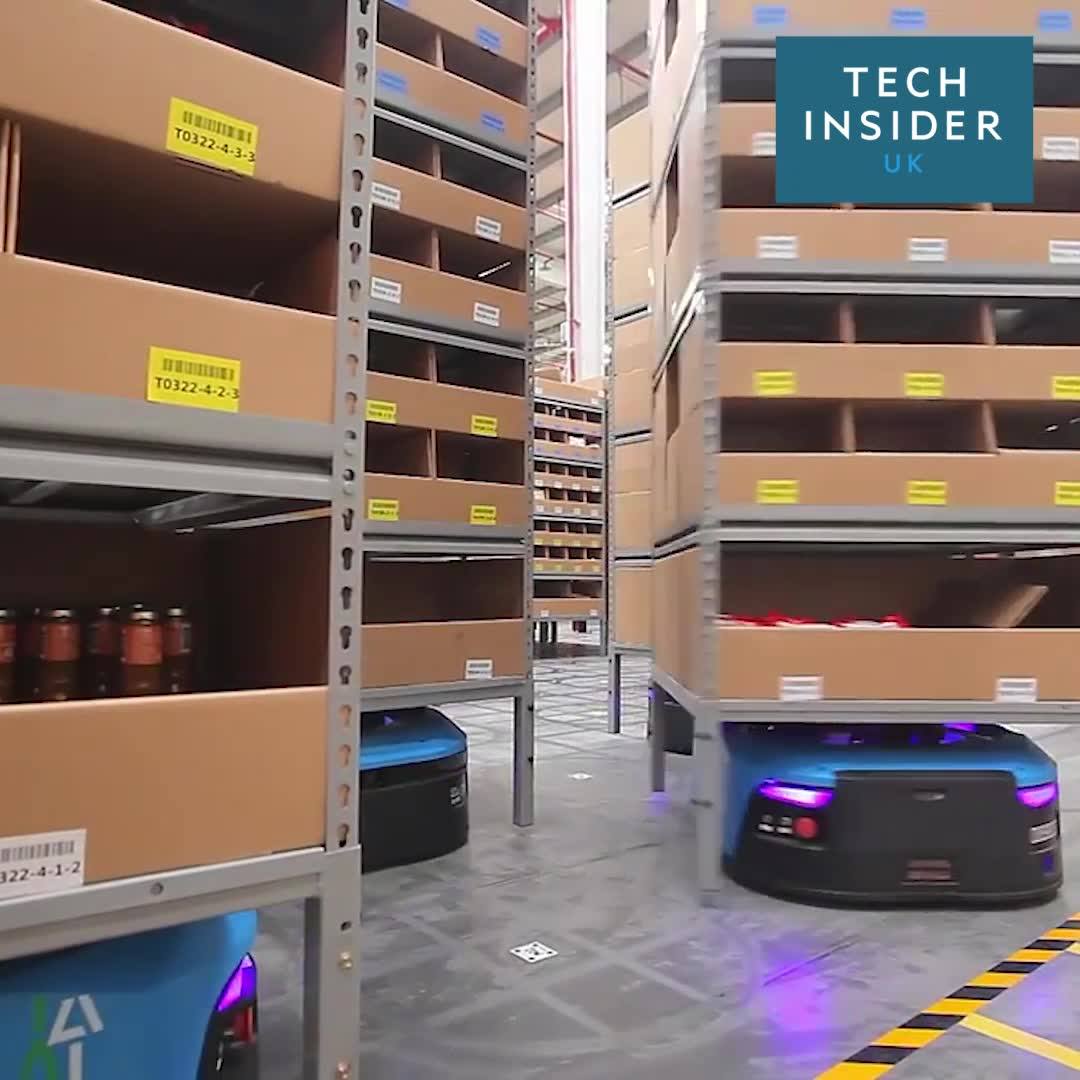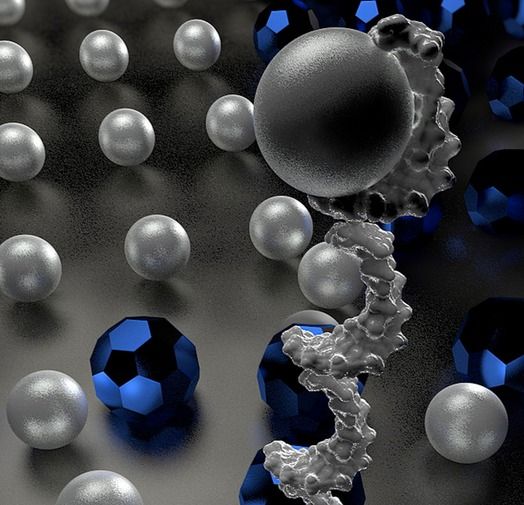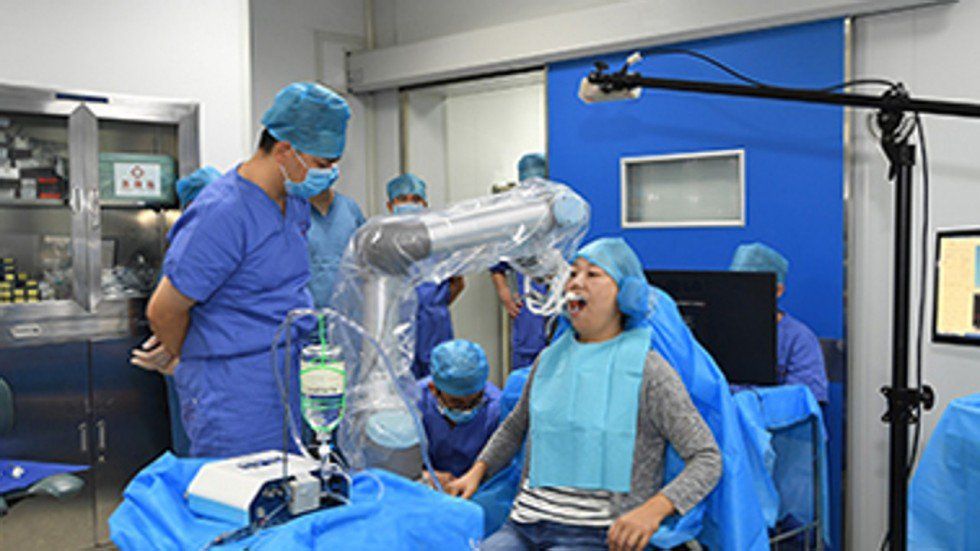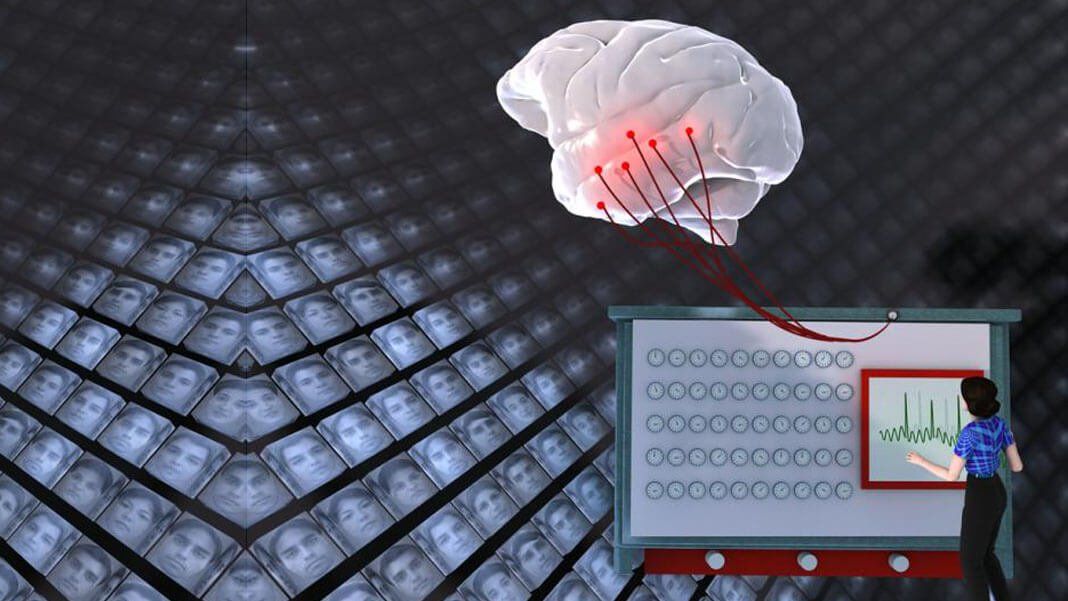
Category: robotics/AI – Page 2,423

AI Will Turn Graphic Design On Its Head
Apple’s 1984 Macintosh revolutionized graphic design—but that was nothing compared to the coming wave of websites that’ll design themselves.


Walking DNA nanorobot could deliver a drug to a precise location in your body
Caltech scientists have developed a “cargo sorting” DNA nanorobot programmed to autonomously “walk” around a surface, pick up certain molecules, and drop them off in designated locations.
The research is described in a paper in the Friday, September 15, 2017 issue of Science.

In China, Robot Dentists Are Implanting 3D Printed Teeth
Open wide, because the robots have eyes on your dental work. South China Morning Post reports that a robo-dentist has autonomously implanted two new, 3D-printed teeth into a woman’s mouth.
The procedure, which appears to have made use of a robot arm from Universal Robotics, was developed by a team from the Fourth Military Medical University and Beihang University. The hardware first orients itself with the patient’s head, and is then programmed with the procedure it needs to undertake. It does a dry run to check that it’s got everything right, before the patient is given an anesthetic and the robot gets drilling. The team says that the robot works to tolerances of less than 0.3 millimeters, and can detect and compensate for movements of the person’s head.
Don’t fancy the idea? Well, bear in mind that it’s hoped the robot will be able to make up for a shortfall in the number of practicing dentists in China, which often leads to unqualified practitioners performing questionable procedures.


New Artificial Intelligence Renders Your Face in 3D Using Just a Photo
Until now, this has been a computational challenge of “extraordinary difficulty,” the researchers wrote, with obstacles posed by different facial poses, expressions, and variable lighting.
“Typically if you want to reconstruct a face you have to try and use something called 3D morphable models, or shape from shading,” Aaron Jackson, a Ph.D. student who works on deep learning applied to human faces and who is one of the authors of the paper, told Seeker.
This method of 3D facial reconstruction analyzes shadows on the face to come up with a likely structure. It requires multiple images and poses.

New Synthetic Muscle Puts Us One Step Closer to Lifelike Robots
Robots still find it difficult to perform delicate actions, like picking up a soft object without causing damage. A new form of synthetic muscle could offer up some major improvements.
A group of researchers from the Columbia University School of Engineering and Applied Science has developed a new type of synthetic soft muscle that can be manufactured using a 3D printer. The material is capable of lifting up to 1,000 times its own weight and boasts fifteen times the strain density (expansion per gram) of natural muscle.
Robots learn to walk naturally
The challenge with bipedal robots isn’t so much getting them to walk at all (although that’s sometimes a problem) as it is getting them to walk naturally. They tend to either step cautiously or quickly run into trouble. Swiss researchers think they can do better, though: they’re working on COMAN (Compliant Humanoid), a headless robot designed to master walking. The automaton is more graceful through a combination of more flexible, elastic joints and a control algorithm that helps the bot understand its own body.
COMAN is aware of the symmetries in its dynamics and structure, which helps it not only walk with a natural gait but carry objects, navigate uneven surfaces like stairs, and react to surprises. If you push the robot, for instance, it knows exactly where to place its foot so that it doesn’t tip over like some of its peers. And thanks to that added flexibility, it’s more likely to survive that rudeness.
The technology is a long way from reaching robots you can interact with. For one thing, these machines would need ‘heads’ or some other way of exploring the world on their own. They may be particularly clever when they arrive, though. The team is also exploring the possibility of teaching bipedal robots t coordinate in shared actions, such as carrying a table. You could eventually see moving robots that have no problems hauling your couch down a flight of stairs.

Forget Police Sketches: Researchers Perfectly Reconstruct Faces
Picture this: you’re sitting in a police interrogation room, struggling to describe the face of a criminal to a sketch artist. You pause, wrinkling your brow, trying to remember the distance between his eyes and the shape of his nose.
Suddenly, the detective offers you an easier way: would you like to have your brain scanned instead, so that machines can automatically reconstruct the face in your mind’s eye from reading your brain waves?
Sound fantastical? It’s not. After decades of work, scientists at Caltech may have finally cracked our brain’s facial recognition code. Using brain scans and direct neuron recording from macaque monkeys, the team found specialized “face patches” that respond to specific combinations of facial features.